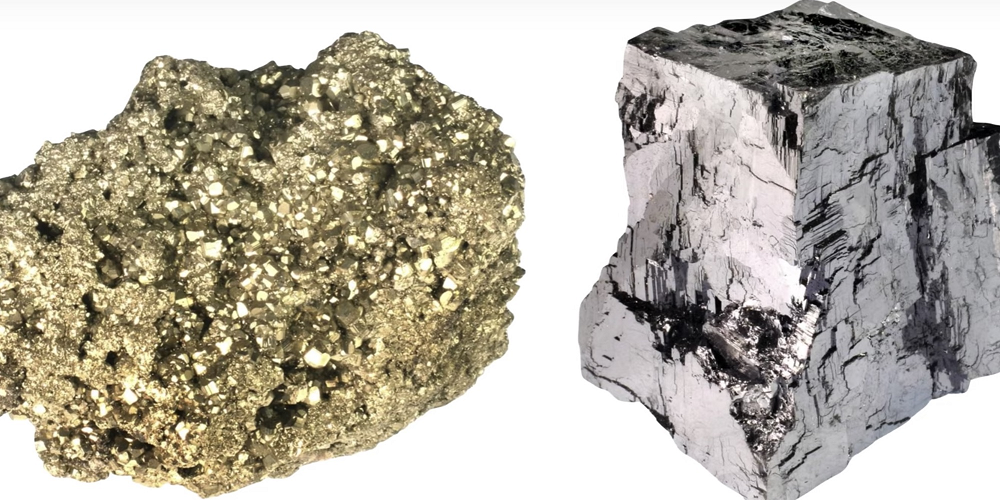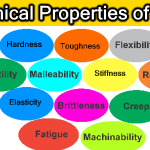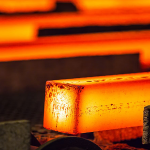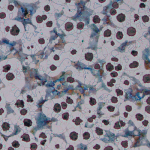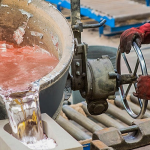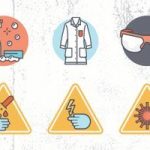Introduction
Most minerals are easily identified by their physical properties such as lustre, colour, hardness, streak, cleavage and parting, fracture and tenacity, magnetism, radioactivity and reaction with acid. This experiment is important since it gives the knowledge and information of the properties of minerals and this knowledge helps in choosing the right materials for specific purposes in service.
During this process of identification, the following properties should be noted:
1. Lustre: This refers to the response of minerals to light. This allows us to classify minerals as either opaque, transparent or translucent. Some minerals are in between opaque and transparent and therefore, they have a dull lustre.
2. Colour: The physical appearance of the mineral is also observed because only few minerals have constant distinctive colours that are of wide, practical use. The colour of a mineral may depend on its usual chemical composition e.g. most of the copper compounds are either green or blue.
3. Hardness: The hardness of a material is determined by its resistance to scratching .In the field, it is sufficient to know the relative hardness of a mineral. This is always determined by using a set of minerals known as Mohr Scale of Hardness. It is used to determine the hardness of minerals by scratching it with those predetermined set of minerals.
4. Streak: The fine powder shows more constant colouration that the same mineral in a massive specimen. Streak is a more reliable diagnostic feature of minerals with semi-metallic and sub metallic lustre. Black streak is typical of opaque minerals with a metallic lustre, colourless, white or occasional colour streak is typical of transparent minerals and a colourless, white or coloured streak is typical of translucent minerals.
5. Cleavage or Parting: Cleavage is the property of a mineral to split under force along planes parallel to crystal faces. Parting is the property of a mineral to break along definite planes unrelated to the crystal structure.
6. Fracture and Tenacity: Surfaces of broken mineral other than those of cleavage of parting, are known as fractures. Unlike cleavage, they are not linear and generally not parallel. Types of fracture include: even, uneven, splintery, conchoidal, hackly, granular and earthy.
7. Magnetic Properties: The deflection of a compass needle by a mineral is a characteristics of ferro-magnetic minerals and moderately magnetic minerals which are extremely abundant do not produce a perceptible effect on the magnetic needle.
8. Reaction with acids: The reaction of a mineral with an acid is the function of its chemical composition. Minerals like limestone or marble will produce an effervescence on addition of HCl. Some copper minerals will turn bluish or greenish with an acid.
Objective of the Experiment
This experiment is carried out to identify minerals through their physical properties
Equipments and Materials Needed
1. Magnets
2. Acid
3. Copper coin
4. Nail
Procedures
The properties of some minerals are discussed below:
1. MARBLE (COARSE): The specimen has an orange coloration with coarse grains and due to the fact that it is a metamorphic rock, it was easily scratched by copper coin and nails therefore it has a hardness rating of about 3 – 4.5 and also the specimen is very glossy and shiny with a calcite cleavage with a white colour streak and is reactive with an acid because it contains calcite.
2. MARBLE (FINE): The specimen has a whitish coloration with fine grains and due to the fact that it is a metamorphic rock, it was easily scratched by copper coin and nails therefore it has a hardness rating of about 3 – 4.5 and also the specimen is very glossy and shiny with a calcite cleavage with a white colour streak and is reactive with an acid because it contains calcite.
3. GRANITE (FINE): This specimen has a white colour with dark patches all over it and its grains are easily seen with an unaided eye and are fine and they are shiny, it has a hardness rating of 7 and also has a white streak and has a dull to grainy sporadic parts pearly and vitreous lustre and also has an opaque transparency, it also reacts with an acid because it contains calcite.
4. GRANITE (COARSE): This specimen has a white colour with dark patches all over it and its grains are easily seen with an unaided eye and are coarse and they are shiny, it has a hardness rating of 7 and also has a white streak and has a dull to grainy sporadic parts pearly and vitreous lustre and also has an opaque transparency, it reacts with an acid because it contains calcite.
5. ALUM: This specimen has a light weight with a white coloration and a vitreous lustre and a hardness rating of 2 and it’s also not opaque in nature, it is very transparent with a conchoidal fracture and a poor/indistinct {111} cleavage i.e. an octahedral cleavage and also reacts with an acid readily.
6. GRANITE (COARSE): This specimen has a tinted colour(black) and its grains are easily seen with an unaided eye and, it has a hardness rating of 7 and also has a white streak and has a dull to grainy sporadic parts pearly and vitreous lustre and also has an opaque transparency, it reacts with an acid because it contains calcite.
7. ANTHILL: It contains sand particles bounded together which is very soft compared to other minerals and it is highly porous and opaque with a clay brown colour.
8. SLAG: The specimen is magnetic and has no definite shape, has an opaque lustre.
9. LEAD: This specimen has a dull grey colour and is very soft, it has a hardness rating of 2.5, It exhibits perfect cleavage that inter.sects at 90 degrees and it produces grey to black streak and it is metallic on fresh surfaces and tarnishes to black, it is opaque in nature and has a malleable fracture, it is not magnetic because it has no carbon content and does not react with acid.
10. STEEL: It has a hardness of 4-4.5 and it’s also highly magnetic, it does not react with acid and was not scratched by a copper coin or finger nail and also it is opaque. These are the characteristics of steel.
11. COAL (FINE): The specimen has a light with a black streak with fine grains, and it’s opaque to light. It’s very brittle and it stains the hand when touched, it has a black colour, it has medium coarse grains with a conchoidal fracture and it has low porosity, has a dull to vitreous lustre.
12. MICA: This specimen has a colourless streak and has a transparent lustre with a very light weight and has a flaky fracture with a hardness of about 2.5-4 and also has a perfect cleavage and does not react with acids too. These are the characteristics of mica.
13. MARBLE (ROUGH WHITE): The specimen has an rough white coloration with fine grains and due to the fact that it is a metamorphic rock, it was easily scratched by copper coin and nails therefore it has a hardness rating of about 3 – 4.5 and also the specimen is very glossy and shiny with a calcite cleavage with a white colour streak and is reactive with an acid because it contains calcite.
14. COAL (COARSE): The specimen has a light with a black streak with coarse grains, and it’s opaque to light. It’s very brittle and it stains the hand when touched, it has a black colour, it has medium coarse grains with a conchoidal fracture and it has low porosity, has a dull to vitreous lustre.
15. TALC: This specimen has a white colour with a perfect cleavage and a flat surface and an uneven fracture with a sec tile tenacity and a hardness rating of 1, it is the softest possible mineral, has a wax-like or pearly lustre and has a white jot streak and is translucent to the passage of light.
16. LIMESTONE: This specimen has a greyish white coloration with an hardness of about 3-4 and has a very low porosity also has a heavy weight and it has fine grains with a splintery fracture and has a white streak with a dull to pearly lustre and also has an opaque transparency. It reacts vigorously with acid due to the calcite present in it. These are the characteristics of limestone.
17. CAST IRON: This specimen is very magnetic more than steel and has a hardness rating of about 4.
18. IRON: This specimen is also magnetic more the steel and also has a hardness rating of 4-4.5
19. COPPER: This specimen has a brown colour with a hardness of about 2.5-3, it has an isometric crystal system and has an opaque 1transparency and also has a specific gravity of about 8.9g/cm3, and it also has a metallic lustre.
Conclusion
It can be seen that the physical properties of minerals is a very important characteristics that can be used in their identification.
Download “Identification of Minerals - Report”
Download “Identification of Minerals - Procedure”

